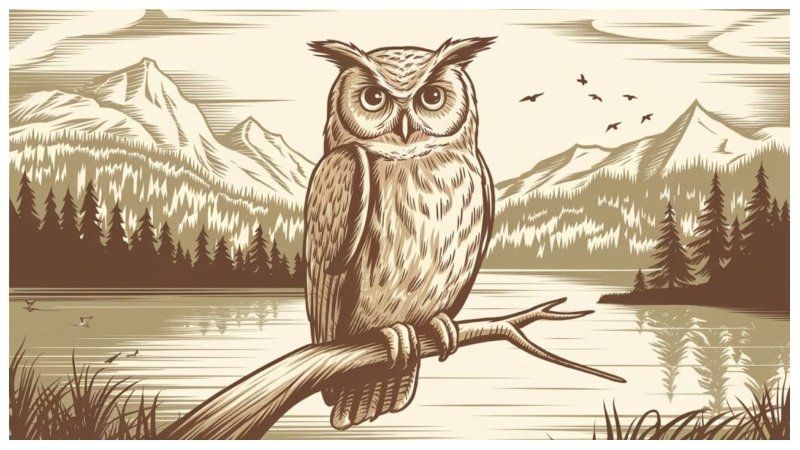Drawing an owl may seem challenging at first, but by breaking the process into manageable steps, you can create a stunning and accurate representation of this majestic bird. This guide will walk you through each step, offering tips and techniques to help you master the art of drawing an owl.
Materials You Will Need
Before beginning, gather the necessary materials. Having the right tools ensures precision and enhances your overall experience. Here are the essentials:
- Sketching Pencils: Use pencils of various grades (HB, 2B, 4B, etc.) for outlining and shading.
- Eraser: A kneaded or rubber eraser will help correct mistakes and add highlights.
- Paper: Choose high-quality sketch paper for a better finish.
- Sharpener: Keep your pencils sharp for detailed work.
- Blending Tools: Cotton swabs, blending stumps, or tissues can help smooth out shading.
- Reference Image: A clear image of an owl will guide your drawing.
Step 1: Start with Basic Shapes
Begin by sketching basic shapes to outline the owl’s body. This foundational step helps establish proportions and ensures your owl looks balanced. Follow these instructions:
- Draw the Head: Sketch a circle for the head. This will serve as the base shape for the owl’s face.
- Add the Body: Below the head, draw an oval slightly wider than the circle. This oval will form the owl’s torso.
- Connect the Shapes: Use two curved lines to connect the head and body, creating the neck.
- Add the Wings: Draw two elongated ovals on either side of the body to represent the wings.
- Outline the Tail: Add a small rectangle or triangle at the bottom for the tail.
These basic shapes will guide the detailed sketching process.
Step 2: Define the Features
Once the basic shapes are in place, start adding details to give the owl its characteristic features. Focus on symmetry and accuracy.
- Eyes: Draw two large circles inside the head shape. Add smaller circles within these to represent the pupils.
- Beak: Sketch a small triangular shape between the eyes. Ensure it is centered for a realistic look.
- Facial Disk: Add a heart-shaped outline around the eyes and beak. This marks the owl’s facial disk, a defining feature.
- Wings and Feathers: Outline the wings with slightly jagged lines to mimic feather patterns.
- Legs and Talons: Draw two short, cylindrical shapes beneath the body for the legs. Add curved lines at the ends to form talons.
Step 3: Refine the Outline
Refining the outline adds clarity and prepares your sketch for shading. Use a sharp pencil for this step.
- Clean Up Lines: Erase unnecessary guidelines from the initial shapes.
- Detail the Face: Add small lines and curves to emphasize the owl’s facial features, such as the eyes and beak.
- Feather Texture: Sketch fine, overlapping lines on the wings, body, and head to represent feathers.
- Shape the Tail: Define the tail’s individual feathers with straight and slightly curved lines.
Take your time during this step, as it sets the stage for realistic shading.
Step 4: Add Texture and Details
Adding texture brings your owl to life. Pay attention to the direction and flow of the feathers for a natural appearance.
- Feathers: Use short, curved strokes to add texture to the wings, chest, and head.
- Facial Disk: Emphasize the circular patterns around the eyes with fine lines.
- Legs and Talons: Add small lines and shading to give the legs a rough, textured look. Detail the talons for sharpness.
- Branch: If your owl is perched, sketch a branch beneath its talons. Add bark texture with irregular lines.
Step 5: Shade the Drawing
Shading adds depth and dimension to your drawing. Use pencils of varying grades for light and dark tones.
- Light Source: Determine the light source to establish areas of shadow and highlight.
- Eyes: Darken the pupils and add a small white highlight for a realistic glint.
- Body: Shade the body lightly, focusing on the contours to enhance the owl’s roundness.
- Wings and Tail: Use darker shading on the wings and tail to create contrast between feathers.
- Background: Add a soft gradient or simple foliage to enhance the composition.
Blend your shading for a smooth, professional finish.
Step 6: Final Touches
The final touches perfect your drawing and make it stand out.
- Highlight Details: Use an eraser to create highlights on the feathers and facial disk.
- Contrast: Darken shadows and outlines where needed to enhance depth.
- Review: Step back and assess your drawing. Adjust any areas that seem off-balance or incomplete.
Tips for Success
- Practice Regularly: The more you practice, the better your drawings will become.
- Study Real Owls: Observe photos or videos to understand their anatomy and behavior.
- Experiment: Try different pencil grades and techniques to find what works best for you.
- Be Patient: Mastery takes time, so don’t rush the process.
Conclusion
Drawing an owl is a rewarding experience that combines skill, observation, and creativity. By following these steps, you can create a detailed and lifelike representation of this fascinating bird. With practice and patience, your owl drawings will soar to new heights.
“Is this article helpful? Keep reading our blog for more content from Fight Club ATX ”
